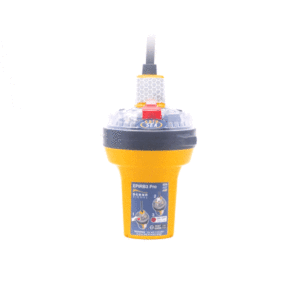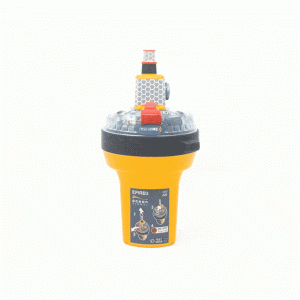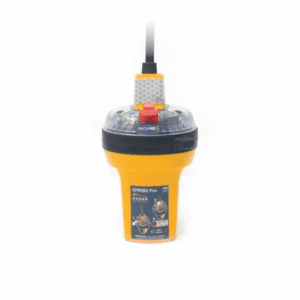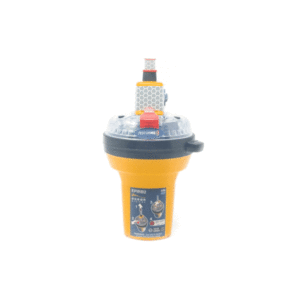
Press releases
Ocean Signal Launches New EPIRB2 Series

Promoting boating safety is a shared responsibility. Discover Emergency Position Indicating Radio Beacons (EPIRBs), crucial for alerting Search and Rescue teams of your precise location in emergencies. Explore how modern AIS EPIRBs streamline Search and Rescue efforts.
EPIRB stands for Emergency Position-Indicating Radio Beacon. It’s sometimes called a GPIRB if it includes a built-in GNSS/GPS receiver for quicker location pinpointing.
An EPIRB, abbreviated from Emergency Position Indicating Radio Beacon, is a distress beacon used by boaters. When activated, it alerts a global Search and Rescue (SAR) network, facilitating swift rescue operations at your precise location.
EPIRBs emit a digital 406 MHz distress signal, containing a unique 15-digit identifier, to the Cospas-Sarsat Satellite System. Depending on your vessel’s registration, this may be a serial number or its Maritime Mobile Service Identity (MMSI) number.
For EPIRBs with a serial number, Search and Rescue forces retrieve your beacon registration (also free but mandatory for all EPIRB owners). This provides ownership details and additional emergency contacts. EPIRBs with an MMSI number require the EPIRB 15 Hex ID to be added to the relevant maritime database.
EPIRBs relay your location to Search and Rescue forces either through GPS data or triangulation calculations from satellites. This information is relayed to the nearest Rescue Coordination Center, initiating your rescue mission. They utilize the EPIRB’s 121.5 MHz homing signal, AIS location signal (on newer EPIRBs), and strobe lights to pinpoint your location for a safe return.
Incorporating AIS technology into some recently approved EPIRBs enables immediate distress and location notification to nearby vessels equipped with AIS transponders upon activation. This allows for prompt rescue operations without relying solely on Search and Rescue authorities. AIS also facilitates local responders in accurately pinpointing the EPIRB’s location, presented as an AIS target on their onboard display. Vessels with onboard AIS can navigate directly to the EPIRB, thus accelerating recovery times and potentially saving lives.


Switching to an AIS EPIRB offers two main benefits: (1) reducing the distress search radius to 10 meters, and (2) sending emergency alerts to all AIS-equipped vessels within VHF range. These features enhance the capability to save more boaters’ lives annually.
Return Link Service (RLS) is a recent improvement to RLS-enabled EPIRBs. It features a blue flashing LED light, serving as visual confirmation from Search and Rescue that they’ve received your emergency distress message. A Return Link Service signal, transmitted via the Galileo satellite network, confirms detection of the distress message, precise beacon location, and identifiers. This reassurance that rescuers are aware of the activated EPIRB and its location helps alleviate stress in mayday situations.




Activate an EPIRB only in grave and imminent danger, where loss of life, limb, or valuable property is likely without emergency assistance. From a sinking vessel to a medical emergency at sea, an EPIRB is crucial for quick rescue.
EPIRBs can be deployed manually or automatically, depending on the bracket category and situation.
In an automatic Float Free Category 1 bracket, the EPIRB releases when the Hydrostatic Release Unit (HRU) is submerged in water at a depth of 1.5 – 4 meters. The release depth varies to accommodate different water temperatures, requiring HRU replacement every two years. In an emergency, the EPIRB detaches from its bracket, surfaces, and signals search and rescue teams for rapid assistance.
EPIRBs in a Category 2 bracket require manual deployment and activation. They can be installed above or below deck, shielded from external influences (e.g., water, traffic, cabin doors). Some users store their beacon in a Ditch bag, but caution is advised as EPIRBs activate upon water immersion, risking false alarms. In Australia and New Zealand, “Class 3” EPIRBs lack water activation, requiring manual activation only, ensuring their performance isn’t affected by water exposure.
You must register your EPIRB with your local authority. Here are instances where registration is necessary:
EPIRB registration renewal with serial numbers should occur every 2 years at least (for most recreational boats), while for other EPIRBs, it should be checked as mandated by the relevant administration. Most registrations can be conveniently updated online, enabling you to easily include a float plan or additional trip details whenever necessary.
Consider your EPIRB Registration as an integral part of your rescue process. By providing detailed and regularly updated information, you’re equipping rescue teams with the essential details to expedite your rescue effectively.
EPIRBs operate on government-funded Search and Rescue Satellites (Cospas-Sarsat), and once you own an EPIRB (or Personal Locator Beacon), there are no obligatory monthly or annual subscription fees*. In fact, EPIRBs save millions of taxpayer pounds annually by streamlining search and rescue operations.
In the event of beacon activation, rescue services are typically provided free of charge in most regions worldwide.
*Some countries do charge a radio license fee, inquiry with your national authorities.
Regular maintenance of your beacon is crucial for an effective survival strategy, and replacing the EPIRB battery (and HRU, if applicable) is vital for your safety. Every beacon has a battery expiration date, and batteries should be replaced according to the interval specified by the relevant authority, or at the latest by the device’s expiry date. Some authorities mandate regular EPIRB servicing, typically every 4 or 5 years, and often require battery replacement during these checks, regardless of the battery’s expiration date.
Find a Battery Replacement Center: Ocean Signal / ACR Electronics
Conduct a monthly self-test to verify your beacon’s functionality. If the test is successful, your beacon is operational. Should the self-test fail, arrange for the beacon to be serviced.
The new EPIRB2 and EPIRB3 series offer NFC (Near Field Communication) technology, enabling users to access EPIRB diagnostics via smartphones. Simply place your smartphone near the EPIRB, and the Ocean Signal Product App will open, providing access to device data. The app displays beacon status information, including current battery life, self-test and GNSS test completion, activation duration, and detailed test results. GNSS tests offer a map view pinpointing the test location, date and time, fix acquisition time, satellites used, and fix accuracy. Easy NFC connectivity ensures users can conveniently verify all beacon functions.
Numerous countries enforce regulations mandating EPIRB carriage on various vessel types (e.g., Fishing Vessels, Large Commercial Vessels, Passenger Vessels, etc.). Some countries also require them on recreational craft venturing beyond a specified offshore distance. The International Maritime Organization (IMO) oversees EPIRB carriage on ships trading internationally, and many countries extend these regulations to vessels in their own waters. It’s vital to review the rules and regulations applicable to your vessel (based on its registration) and ensure you possess the required safety equipment, which may include an EPIRB.